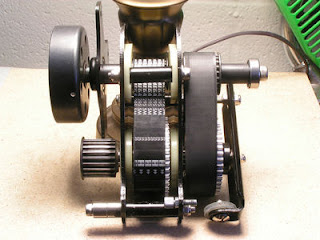beginner01 said:
These CVTs are the evil in the world of low-powered bikes, IMO. Although they say they are good for 3-8hp, they really aren't good under 5hp at the very least. There are a few problems in play here:.......
There are so many choices of CVT today so if you choose the right one for your need there will be no problems, even if you run a 10K RPM motor. In addition to the spring in primary clutch there are weights/rollers that you can swap, file, grind etc to meet your criteria. Have a high RPM motor? No problem. Tune the CVT to set take off/engage RPM higher RPM ie 3000 RPM and use the right combination spring/weight/rollers to let motor spin up to max RPM. Snowmobiles with high power can stay "forever" with 8000 crank RPM without any problems for CVT. So adding 2K more RPM's should be a cake walk.
First off, being a mechanical torque-sensing setup, the CVT upshifts depending on load, and therefore must keep the belt very tight. The driven unit is spring-loaded closed and the driver is progressively GETTING closed by the centrifugal weights spinning out and pushing the cone driver inwards. This introduces a lot of friction.
Friction? Well yes on the belt the same way a chain hugs the cogs/sprockets, but the hug is sideways. But the friction does not eat up or tear up todays high quality kevlar belts.
If you have 4hp good luck getting a usable rpm range out of it. First off, the CVT engages at 2200rpm stock and will shift up to 3300rpm, at which point if your motor doesn't have enough power to overcome the belt friction and all, that'll be your max RPM.
Agreed, if you have low powered motor, wasting motor power into any sort of mechanical gearbox is not your best choice.
A CVT can't do magic. If you got a lazy RC motor with low peak power you can't expect insane power, thrilling hill climbs, mad acceleration and scary top speed.
But if you have a semi powerful or powerful motor the correct tuning of CVT will give you a much wider RPM band. For instance engage at 4000 RPM and top out at 8-10.000 RPM. I would think one (or more

) Astro 3220 would work well with a CVT. Or those crazy Joby motors. Or even a mid mounted powerful hub motor with a much more narrow RPM band but with more torque could benefit from CVT. But those DD hubs add weight too, so on second thought that was a moot point. The combined weight of DD hub and CVT would be too much for e-bike use.
In fact, a CVT never achieves 100% efficiency. You might get 95% with a fresh belt but expect to see under 75% as the belt wears. And it weighs about 15lbs.
If you have the right motor to begin with 95% might be acceptable.
Remember that any gear reduction will take away from motor efficiency. If you use a two step reduction that too will reduce motor output power before the power hits the wheel. Again, belt wear is minimal even on high powered motors so I would not worry about belt wear for an e-bike due to the light weight and overall low rolling resistance. When you notice loss of power just change the belt, you wouldn't ride a normal bike until chain it starts skipping teeth's on the sprockets. I do agree about the weight. Those CVT's add weight.
The max speed I was able to attain with the CVT was 34mph or so and with awful hillclimbing. The damn belt smoked when I tried a big hill. Single speed/single JS I achieved 47mph.
Well seems you did something wrong. Either you chose the wrong CVT to begin with, had too little power in your motor, or messed up when tuning primary and secondary clutch springs/weights/rollers or a combination of all this. Smoking CVT belts are from the past, you should not have any problems with smoking belts with the right setup.
Tuning a CVT can be very difficult if you have not done it before, and even when you think you have optimal tuning you might find that changing the ration between front sprocket and rear sprocket might make a big different in end result. So can wheel size etc.
I am not saying CVT rules for e-bikes, but for some people with special needs or special usage a CVT is one way of achieving desired goal of performance. A drop in efficiency might be tolerable for some, other will just not even consider a CVT or any other mechanical gearbox for e-bike use.
 ...anyway, thought it might be of interest for
...anyway, thought it might be of interest for



